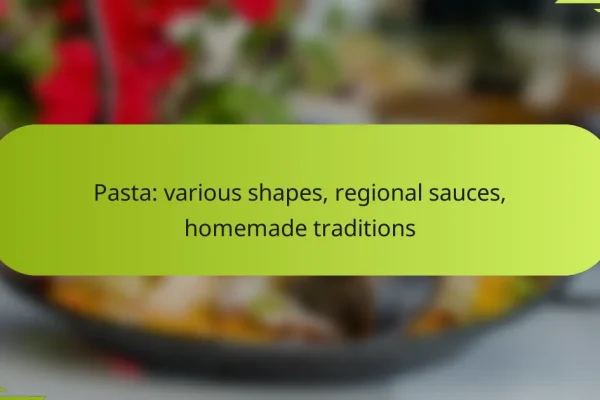How can you experience authentic Canadian cuisines?
Experiencing authentic Canadian cuisines involves engaging with local food sources, traditions, and culinary practices. By exploring farmers’ markets, dining at traditional restaurants, attending food festivals, and participating in cooking classes, you can gain a deeper appreciation for Canada’s diverse culinary landscape.
Explore local farmers’ markets
Visiting local farmers’ markets is a great way to discover authentic Canadian ingredients and dishes. These markets often feature fresh produce, meats, and artisanal products from local farmers and producers. Look for markets that operate year-round or during the growing season to find seasonal specialties.
When shopping at farmers’ markets, consider asking vendors for recipe ideas or cooking tips. This interaction can enhance your understanding of how to prepare traditional Canadian dishes using fresh, local ingredients.
Visit traditional restaurants
Dining at traditional Canadian restaurants allows you to taste authentic dishes prepared by skilled chefs. Seek out establishments that focus on regional specialties, such as poutine in Quebec or butter tarts in Ontario. Many of these restaurants prioritize local ingredients, further enhancing the authenticity of your meal.
To find the best spots, check online reviews or ask locals for recommendations. Reservations may be necessary for popular venues, especially during peak dining hours or tourist seasons.
Attend food festivals
Food festivals are excellent opportunities to experience a variety of Canadian cuisines in one place. These events often showcase local chefs, food producers, and unique dishes, allowing you to sample different flavors and cooking styles. Look for festivals that celebrate specific regions or culinary themes, such as the Calgary Stampede or the Toronto Food and Drink Festival.
Participating in workshops or demonstrations at these festivals can provide insight into traditional cooking methods and recipes. Be sure to check the festival schedule in advance to plan your visit around key events.
Participate in cooking classes
Cooking classes offer hands-on experiences that can deepen your understanding of authentic Canadian cuisines. Many culinary schools and local chefs offer classes focusing on traditional dishes and techniques. These classes can range from a few hours to multiple days, depending on the complexity of the cuisine.
When selecting a class, consider the instructor’s background and the specific dishes you want to learn. This practical experience will not only enhance your cooking skills but also provide you with a richer appreciation for Canadian culinary traditions.
What are the must-try authentic dishes in Canada?
Canada boasts a diverse culinary landscape, with several authentic dishes that reflect its rich cultural heritage. Among the must-try dishes are poutine, butter tarts, tourtière, and the peameal bacon sandwich, each offering a unique taste of Canadian tradition.
Poutine
Poutine is a quintessential Canadian dish originating from Quebec, consisting of French fries topped with cheese curds and smothered in gravy. The combination of crispy fries, squeaky cheese, and savory gravy creates a comforting meal that is both hearty and satisfying.
When enjoying poutine, consider trying variations that include additional toppings such as pulled pork or sautéed mushrooms. While traditional poutine is delicious, experimenting with different ingredients can enhance the experience.
Butter tarts
Butter tarts are a classic Canadian dessert featuring a flaky pastry shell filled with a rich, gooey mixture of butter, sugar, and eggs. This sweet treat is often enhanced with raisins or nuts, providing a delightful contrast in texture and flavor.
To make the perfect butter tart, ensure that the filling is not overcooked, as it should remain soft and slightly runny. When baking, keep an eye on the tarts to achieve the ideal golden-brown crust.
Tourtière
Tourtière is a traditional meat pie that hails from Quebec, typically made with minced pork, beef, or game meat, seasoned with spices. This savory dish is often enjoyed during the holiday season but can be found year-round in many Canadian households.
When preparing tourtière, using a mix of meats and spices can elevate the flavor profile. Serve it hot with a side of pickles or a simple salad for a complete meal.
Peameal bacon sandwich
The peameal bacon sandwich, also known as a “Canadian bacon sandwich,” features peameal bacon, which is made from lean back bacon rolled in cornmeal, served on a bun. This sandwich is a popular breakfast option in Canada, often accompanied by mustard or other condiments.
For the best experience, opt for freshly cooked peameal bacon and a soft bun. Adding toppings like lettuce, tomato, or a fried egg can enhance the sandwich’s flavor and texture.
Where can you find authentic Canadian dishes?
Authentic Canadian dishes can be found in various vibrant locations across the country, each offering unique culinary experiences. Key cities like Toronto, Montreal, and Vancouver are renowned for their diverse food scenes that celebrate traditional Canadian cuisine.
Toronto’s Kensington Market
Kensington Market is a bustling neighborhood in Toronto known for its eclectic mix of food vendors and restaurants. Here, you can find authentic Canadian dishes such as peameal bacon sandwiches and butter tarts, often made with locally sourced ingredients.
When visiting, explore the various shops and eateries that reflect Toronto’s multicultural heritage. Don’t miss the chance to try unique fusion dishes that incorporate traditional Canadian flavors with international influences.
Montreal’s Old Port
Montreal’s Old Port is a historic area that offers a taste of Quebec’s rich culinary traditions. Here, you can savor classic dishes like poutine and tourtière, which are staples of Canadian cuisine.
In addition to dining, the Old Port hosts food festivals and markets where local chefs showcase their skills. Be sure to sample artisanal cheeses and maple syrup products that highlight the region’s agricultural bounty.
Vancouver’s Granville Island
Granville Island is a vibrant marketplace in Vancouver known for its fresh produce and artisanal foods. Visitors can enjoy authentic Canadian dishes such as salmon burgers and Nanaimo bars, made with ingredients sourced from local farmers.
The island features a public market where you can interact with local vendors and sample a variety of dishes. Take advantage of the waterfront views while enjoying a meal that represents the best of British Columbia’s culinary offerings.
What are the key ingredients in Canadian cuisine?
Canadian cuisine is characterized by its diverse ingredients, reflecting the country’s vast geography and cultural influences. Key ingredients include maple syrup, wild game, and fresh seafood, each contributing unique flavors and culinary traditions.
Maple syrup
Maple syrup is a quintessential Canadian ingredient, primarily produced in Quebec, which accounts for a significant portion of the world’s supply. This natural sweetener is made from the sap of sugar maple trees and is typically harvested in early spring.
When using maple syrup in cooking, consider its versatility; it can be used in both sweet and savory dishes. For instance, it pairs well with pancakes, glazes for meats, and even salad dressings.
Wild game
Wild game, such as venison, elk, and bison, is an important part of Canadian cuisine, particularly in rural and Indigenous communities. These meats are often leaner than farmed meats and provide a rich, distinct flavor.
When preparing wild game, marinating can enhance tenderness and flavor. Cooking methods like roasting or grilling are popular, but it’s essential to avoid overcooking to maintain juiciness.
Fresh seafood
Fresh seafood is abundant in Canada, especially along the Atlantic and Pacific coasts. Popular varieties include salmon, lobster, and scallops, which are often celebrated in regional dishes.
When selecting seafood, look for sustainable options that adhere to local fishing regulations. Freshness is key; aim to consume seafood within a day or two of purchase for the best flavor and texture.
How does Canadian cuisine reflect cultural diversity?
Canadian cuisine showcases its cultural diversity through a blend of traditional and contemporary dishes influenced by various ethnic groups. This rich tapestry is evident in the ingredients, cooking methods, and flavors that reflect the country’s Indigenous roots and colonial history.
Indigenous influences
Indigenous peoples have significantly shaped Canadian cuisine, introducing ingredients such as wild game, fish, berries, and various plants. Traditional cooking methods, including smoking and drying, are still prevalent in many Indigenous dishes today.
Common Indigenous foods include bannock, a type of flatbread, and dishes featuring venison or salmon. These ingredients not only highlight local resources but also emphasize sustainable practices that have been passed down through generations.
French and British heritage
The French and British colonial periods have left a lasting impact on Canadian cuisine, introducing techniques and dishes that are now staples. French cuisine contributes rich flavors and techniques, evident in dishes like poutine, which combines fries, cheese curds, and gravy.
British influences can be seen in hearty meals such as meat pies and fish and chips. The fusion of these culinary traditions has led to a unique Canadian identity, where comfort food often reflects a blend of both heritages.















